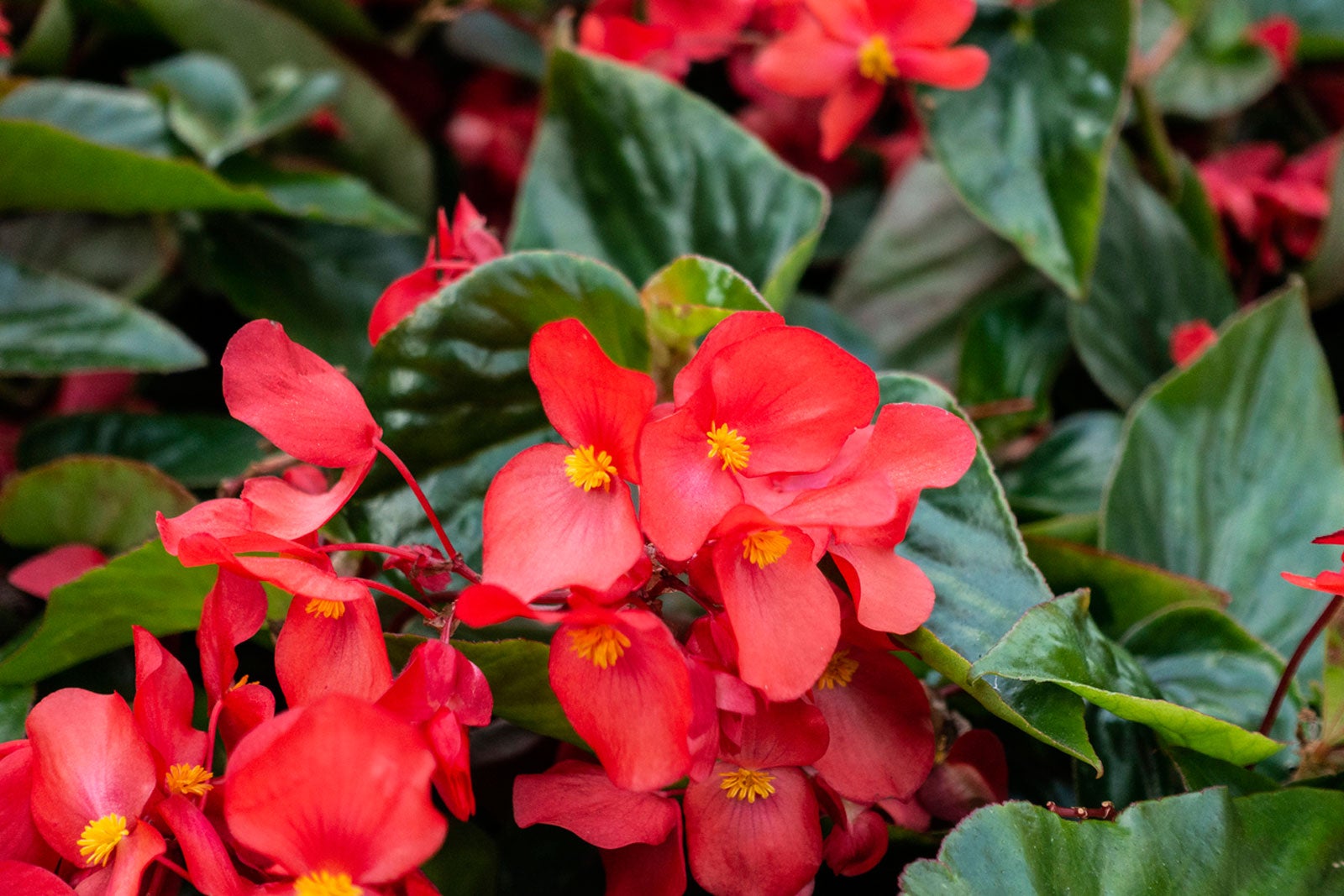The Enchanting World of Begonias: A Comprehensive Guide
Begonias, a genus encompassing over 2,000 species, are a captivating group of flowering plants beloved by gardeners and houseplant enthusiasts alike. Their incredible diversity, ranging from delicate, trailing varieties to robust, upright specimens, ensures there’s a begonia for virtually every taste and growing condition. This article delves into the fascinating world of begonias, exploring their origins, classifications, cultivation, and the unique characteristics that make them so appealing.
Begonias are native to tropical and subtropical regions worldwide, with a concentration in Central and South America, Africa, and Southeast Asia. The genus was named after Michel Bégon, a French patron of botany, by Charles Plumier, a French botanist, in the late 17th century. This vast geographical distribution has resulted in an astonishing array of forms, sizes, and colors.
:max_bytes(150000):strip_icc()/begonias-care-guide-7108561_01-cae8e12094fd45bca1a8256692dab20f.jpg)
Understanding the different classifications of begonias is essential for successful cultivation. While there are numerous ways to categorize them, the most common approach is based on their growth habits and root structures.
Rhizomatous Begonias
These begonias are characterized by their thick, creeping rhizomes that grow horizontally along the soil surface.
Tuberous Begonias
Tuberous begonias are known for their large, showy flowers, often double or semi-double, in a wide range of colors.
Fibrous-Rooted Begonias

This group encompasses a wide variety of begonias with fibrous root systems.
Cane-Like Begonias
These begonias have upright, cane-like stems and often produce clusters of delicate flowers.
Wax (Semperflorens) Begonias
Also known as bedding begonias, wax begonias are compact, bushy plants with glossy leaves and continuous flowering.
Trailing/Scandent Begonias
These begonias feature cascading or climbing stems, making them ideal for hanging baskets and vertical gardens.
Rex Begonias

Rex begonias are prized for their spectacular foliage, which displays a dazzling array of colors, patterns, and textures.
Successful begonia cultivation hinges on providing the right growing conditions. While specific requirements vary depending on the type of begonia, some general guidelines apply.
Light
Most begonias prefer bright, indirect light. Direct sunlight can scorch their leaves, especially during the hottest parts of the day.
Watering
Begonias generally prefer consistently moist, but not soggy, soil.
Humidity
Begonias thrive in high humidity, especially rex begonias.
Temperature
Begonias prefer warm temperatures, typically between 60°F and 75°F (15°C and 24°C).
Soil
Begonias prefer well-draining, slightly acidic soil.
Fertilizing
Feed begonias with a balanced liquid fertilizer every two to four weeks during the growing season.
Begonias can be propagated through various methods, including:
Stem Cuttings
Take stem cuttings from healthy, non-flowering shoots.
Leaf Cuttings
Rex begonias and some rhizomatous begonias can be propagated from leaf cuttings.
Tuber Division
Tuberous begonias can be propagated by dividing the tubers in spring before planting.
Seed Propagation
Begonia seeds are very small and require careful attention.
Begonias are generally resistant to pests and diseases, but they can be susceptible to a few common problems.
Powdery Mildew
This fungal disease appears as a white, powdery coating on the leaves.
Root Rot
Caused by overwatering, root rot leads to wilting and yellowing leaves.
Mealybugs
These small, white insects feed on plant sap and leave behind a cottony residue.
Aphids
Small insects that feed on new growth.
Begonias are incredibly versatile plants that can be used in a variety of settings.
Gardens
Wax begonias are ideal for bedding plants, borders, and containers.
Containers
Begonias thrive in containers, making them perfect for patios, balconies, and indoor gardens.
Houseplants
Rex begonias and other foliage begonias are popular houseplants, adding a touch of tropical elegance to any interior.
Begonias, with their remarkable diversity and adaptability, continue to captivate gardeners and plant enthusiasts worldwide. From the vibrant blooms of tuberous begonias to the intricate foliage of rex begonias, there’s a begonia for every preference. By understanding their specific needs and providing the right growing conditions, you can enjoy the beauty and charm of these enchanting plants for years to come. Their ability to adapt to so many different environments, and the sheer volume of variety, makes them a constantly rewarding plant to grow.
:max_bytes(150000):strip_icc()/begonias-care-guide-7108561_01-cae8e12094fd45bca1a8256692dab20f.jpg?w=1200&resize=1200,0&ssl=1)